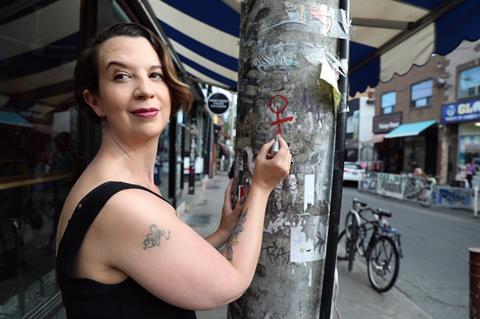The true meaning of place lies in the communities that hold a neighbourhood together, writes Leslie Kern

Gentrification in the 21st century is arguably a faster, meaner process with a bigger footprint than ever before. At the neighbourhood level though, it’s often, as they say, the little things that matter most. Whether it’s the arrival of an organic butchers or the departure of a beloved barber shop, the changing everyday landscape of a community is where the gut punch of gentrification is felt.
We all know that where we live is so much more than the four walls of a flat or the buildings that line the street. Location matters, but in the sense that it positions us relative to our social networks, schools, health care, green spaces, sites of worship, and local services. All of the things that keep us rooted in a sense of belonging, safety, and wellbeing.
When those elements of a neighbourhood begin to change, it’s not just nostalgia that makes us wince. It’s a deep-seated fear of losing our sense of place in the world.
Displacement has been a hallmark feature of gentrification since the term was coined in the 1960s. Often it refers to the out-migration of lower income or racial minority residents who can no longer afford to stay. But gentrification rarely entails the complete replacement of a community. What about those who stay?
Sensory displacement describes the changing sights, sounds, smells, and tastes of a neighbourhood
For long-time residents who are not pushed out, at least not right away, displacement takes other forms. Sensory displacement describes the changing sights, sounds, smells, and tastes of a neighbourhood. While they might seem innocuous, shifts in the languages spoken, the music played, and the food cooked are signals to people that they and their neighbours may no longer belong.
Social interactions are also essential elements of community. Research with African American seniors in Harlem found that the lack of acknowledgement or friendly conversation on the street from white newcomers made the elders feel invisible and disrespected. Although many of the seniors were not being forced to leave, they feared that the social networks that had sustained Harlem through thick and thin were being undermined.
These networks are not only about friendliness. They also keep people afloat in tough times. A single mother has a trusted neighbour to help look after little ones when she’s called in to work. The grocer on the corner that’s known a family for decades extends a little credit until pay day at the end of the week. The café owner notices if an elder doesn’t come in for her daily coffee and sends someone to check on her wellbeing. Social networks can be the difference between keeping and losing a job, having food on the table or going hungry, and even between life and death.

As the local environment and its social connections are destabilized, an accumulation of small, everyday displacements builds to what some have called “un-homing,” the disruption of the sense of being at home in your community. It’s like a reverse uprooting: staying in place but having the roots ripped out from under you. How long can one survive in that state?
This emotional pain is undergirded by serious material changes that impact people’s quality of life. For renters or those on fixed incomes, the changes to the neighbourhood may induce a sense of precarity and fearful anticipation of being evicted and forced to move.
Newcomers may also use the authorities to bolster their claims to space, for example by calling police or bylaw officers to address unwanted noise, music, or street activity. This can result in harassment or physical harm to community members who don’t conform with the changing image of the neighbourhood.
Most of these changes are not as spectacularly destructive as tearing down homes or shops. Instead, they constitute a kind of slow violence that pulls at the fabric of community, one thread at a time, until the remnants are in tatters.
This does not mean that cities can never change
For minority communities, the takeover of space and its transformation into something often perceived as “improved” is a deep insult given that these neighbourhoods have been built and sustained under hostile conditions. Enduring the racism of the housing market, financial institutions, education, employment, policing, and more, such communities are rightly outraged when their hard work becomes the foundation for someone else’s profit. As Ta-Nehisi Coates put it, gentrification is theft.
As city dwellers around the world confront gentrification, they are advocating not just for a right to housing but a right to community. They recognize that home is more than a house: it includes all of the places, services, and relationships that support us.
This does not mean that cities can never change. The direction of change, however, must acknowledge the critical nature of the root system holding communities together. It is within this network that the true value and meaning of place is found.
Postscript
Leslie Kern is an associate professor of geography and environment at Mount Allison University. She is the author of two books on gender and cities, including Gentrification Is Inevitable and Other Lies, out now with Verso Books
















1 Readers' comment